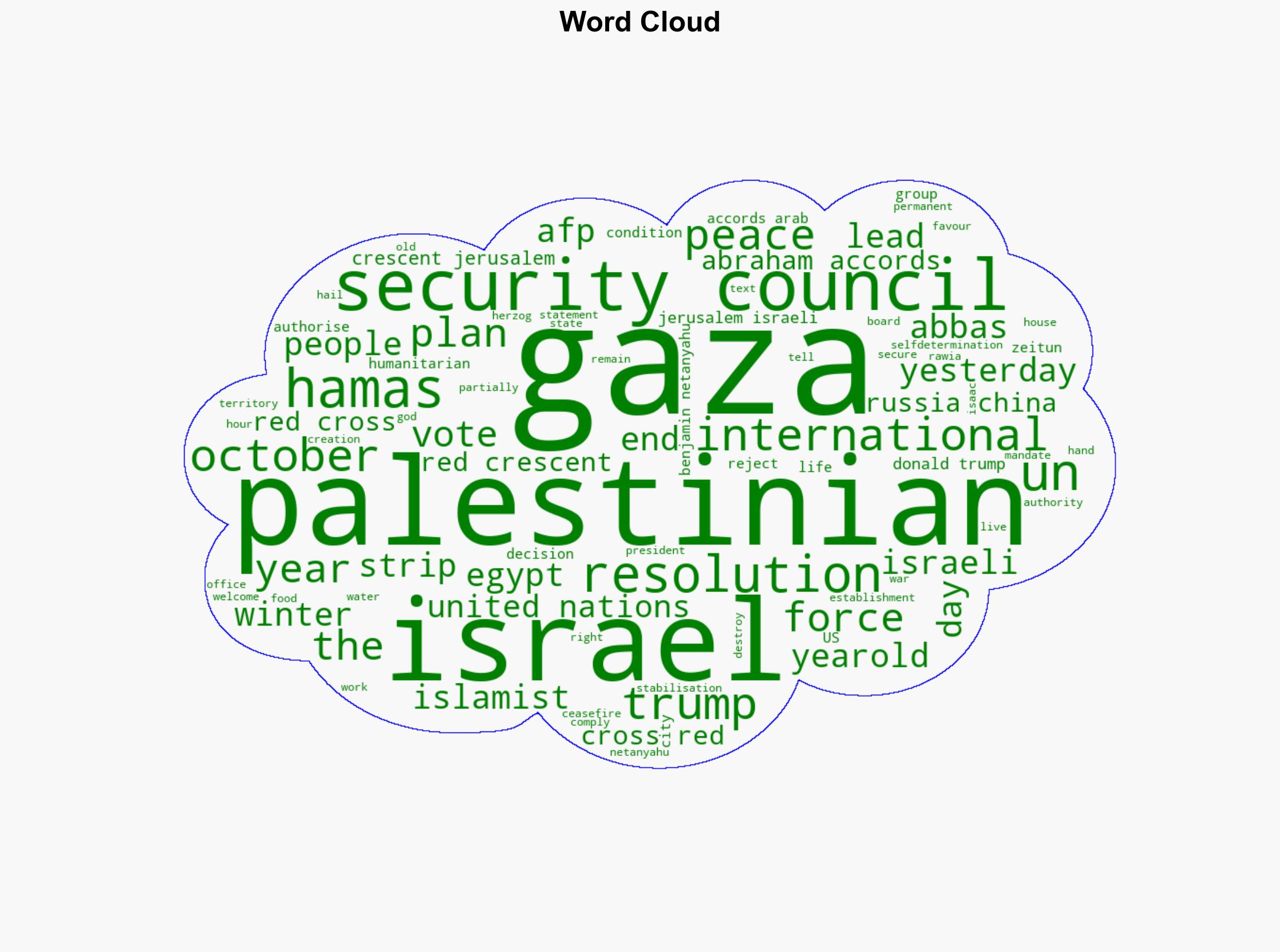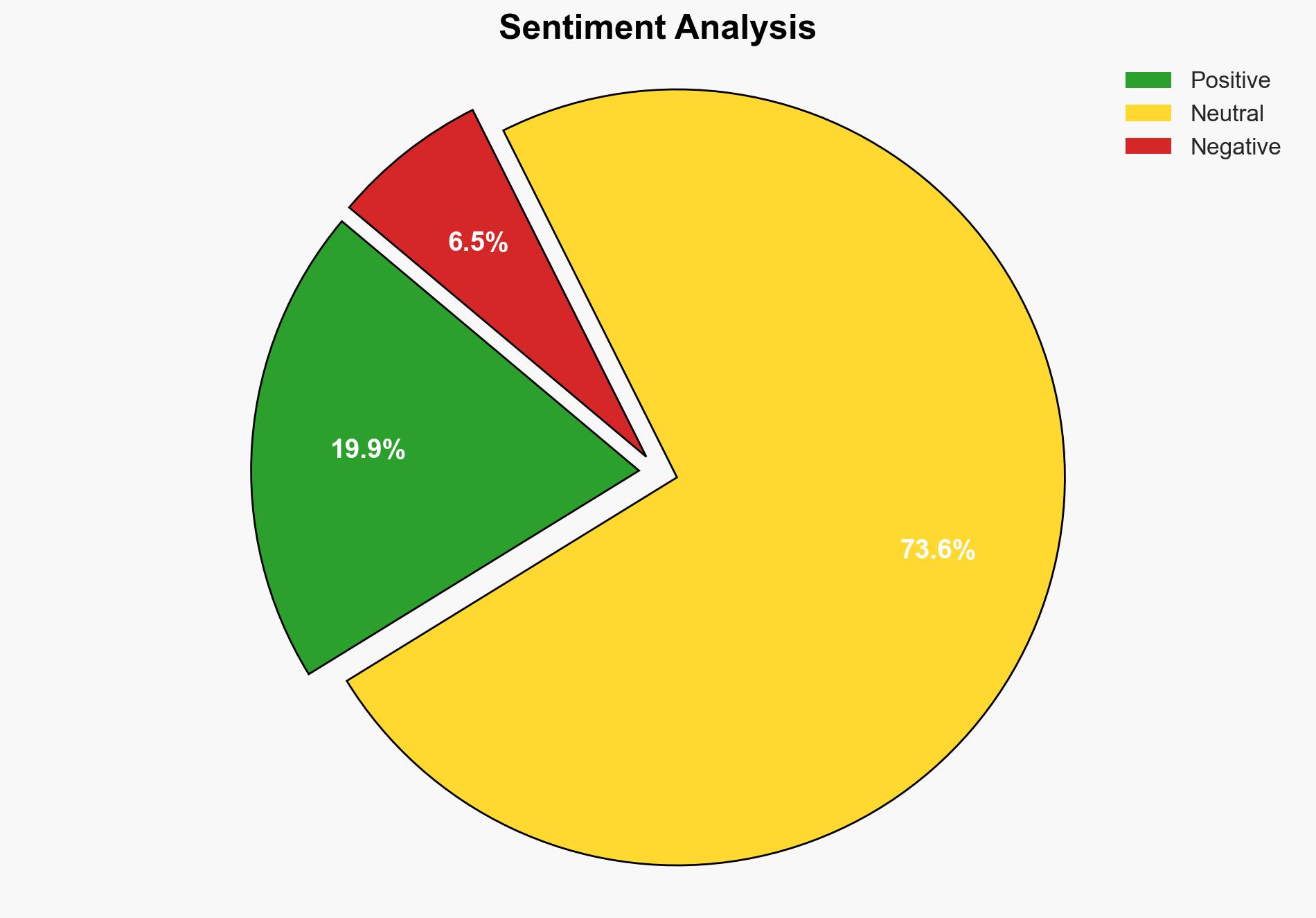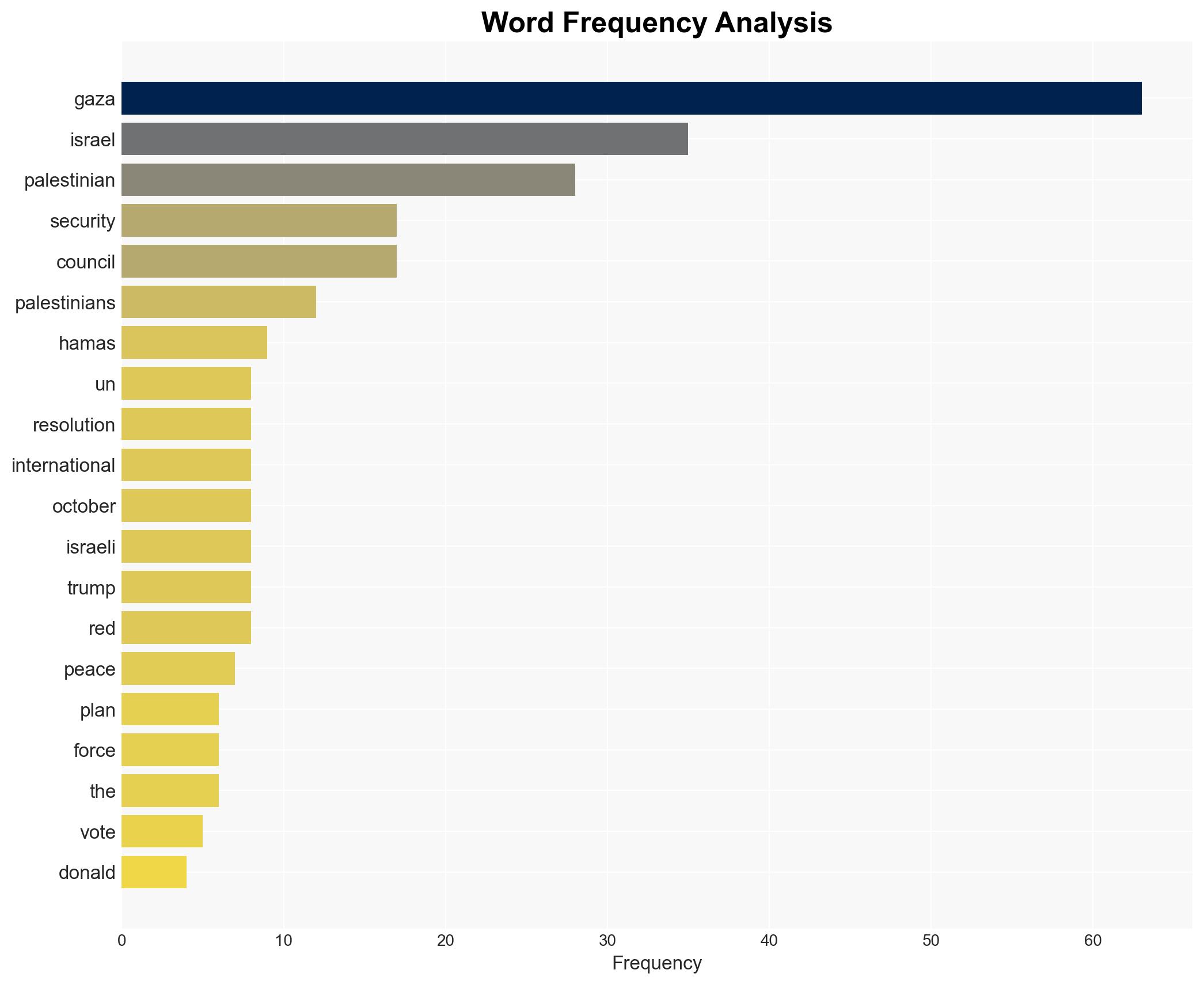Israel hails Trump Gaza plan after UNSC vote – RTE
Published on: 2025-11-18
AI-powered OSINT brief from verified open sources. Automated NLP signal extraction with human verification. See our Methodology and Why WorldWideWatchers.
Intelligence Report:
1. BLUF (Bottom Line Up Front)
The most supported hypothesis is that the endorsement of Trump’s Gaza plan by Israel and the UNSC vote is a strategic move to bolster regional alliances and stabilize the area, albeit with significant challenges. Confidence level: Moderate. Recommended action: Monitor implementation closely and engage with regional stakeholders to ensure compliance and address humanitarian needs.
2. Competing Hypotheses
Hypothesis 1: The endorsement of Trump’s Gaza plan by Israel and the UNSC vote is a genuine effort to stabilize Gaza and improve regional security through international cooperation and demilitarization.
Hypothesis 2: The plan is primarily a political maneuver by Israel and the US to consolidate power and influence in the region, with limited genuine intent to address Palestinian needs or achieve long-term peace.
Hypothesis 1 is more likely given the international support and the structured approach to demilitarization and humanitarian aid, but Hypothesis 2 cannot be dismissed due to historical patterns of political maneuvering and the exclusion of Hamas from governance roles.
3. Key Assumptions and Red Flags
Assumptions: The international force will be effective in maintaining peace; Israel and Egypt will cooperate fully with the plan; Palestinian authorities will accept and support the plan.
Red Flags: Hamas’s rejection of the plan and potential for increased violence; lack of clear enforcement mechanisms for compliance; historical failures of similar initiatives.
Deception Indicators: Overly optimistic public statements by involved parties; lack of transparency in the plan’s implementation details.
4. Implications and Strategic Risks
The plan’s success hinges on cooperation among diverse stakeholders, which is historically challenging. Failure to implement the plan could lead to increased violence, humanitarian crises, and further destabilization. Politically, the plan could strain US relations with other Middle Eastern countries if perceived as biased. Economically, prolonged instability could deter investment in the region.
5. Recommendations and Outlook
- Actionable Steps: Engage with regional partners to ensure compliance and address humanitarian needs; establish clear enforcement mechanisms for the plan.
- Best Scenario: Successful implementation leads to reduced violence and improved living conditions in Gaza.
- Worst Scenario: Plan failure results in escalated conflict and humanitarian disaster.
- Most-likely Scenario: Partial implementation with ongoing tensions and sporadic violence.
6. Key Individuals and Entities
Benjamin Netanyahu, Donald Trump, Hamas, United Nations Security Council, Isaac Herzog.
7. Thematic Tags
Regional Focus, Middle East, Israel, Palestine, Gaza, International Relations, Security, Humanitarian Aid
Structured Analytic Techniques Applied
- Causal Layered Analysis (CLA): Analyze events across surface happenings, systems, worldviews, and myths.
- Cross-Impact Simulation: Model ripple effects across neighboring states, conflicts, or economic dependencies.
- Scenario Generation: Explore divergent futures under varying assumptions to identify plausible paths.
Explore more:
Regional Focus Briefs ·
Daily Summary ·
Support us





